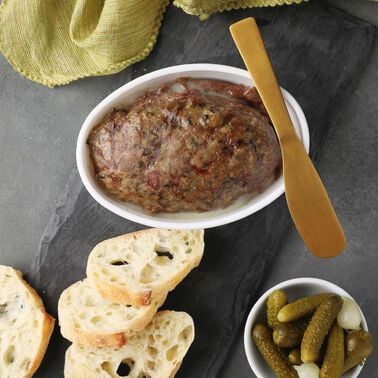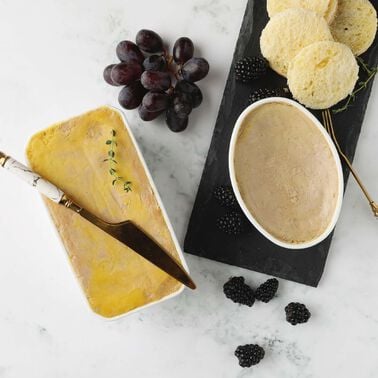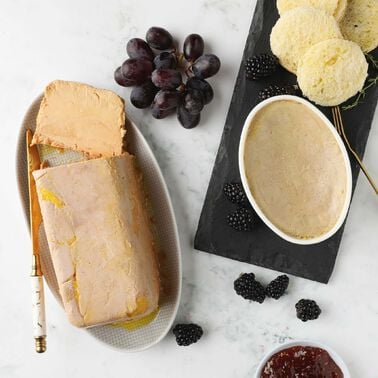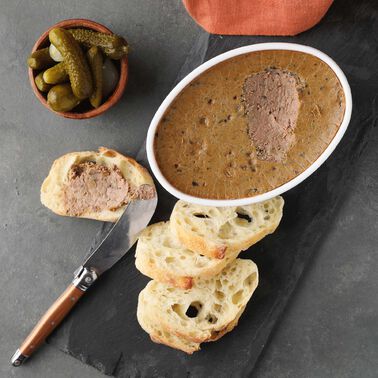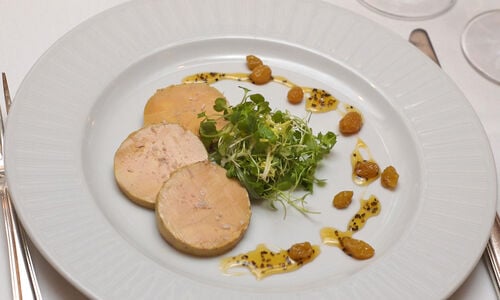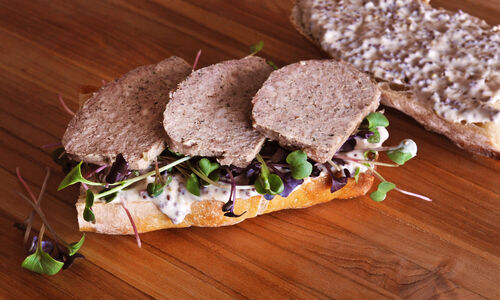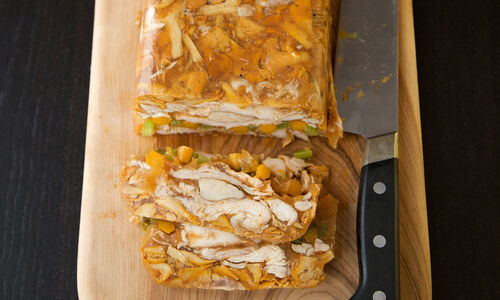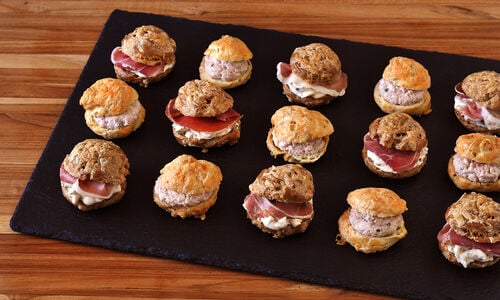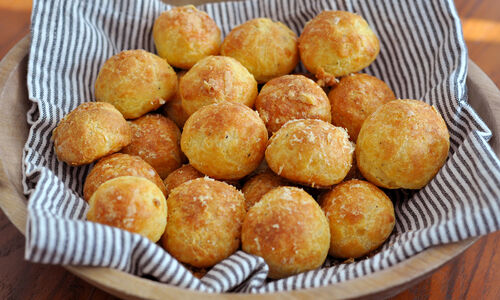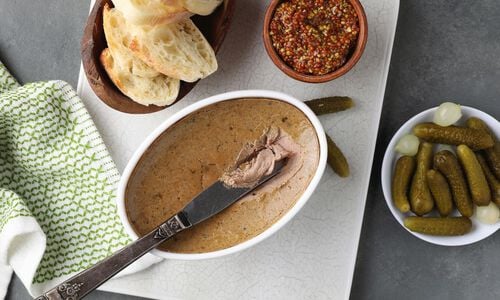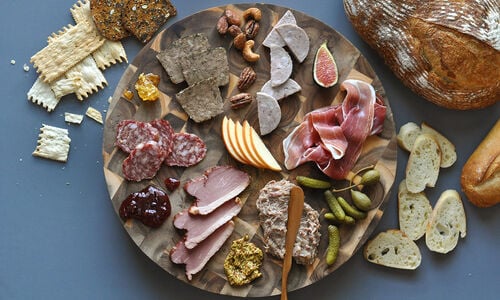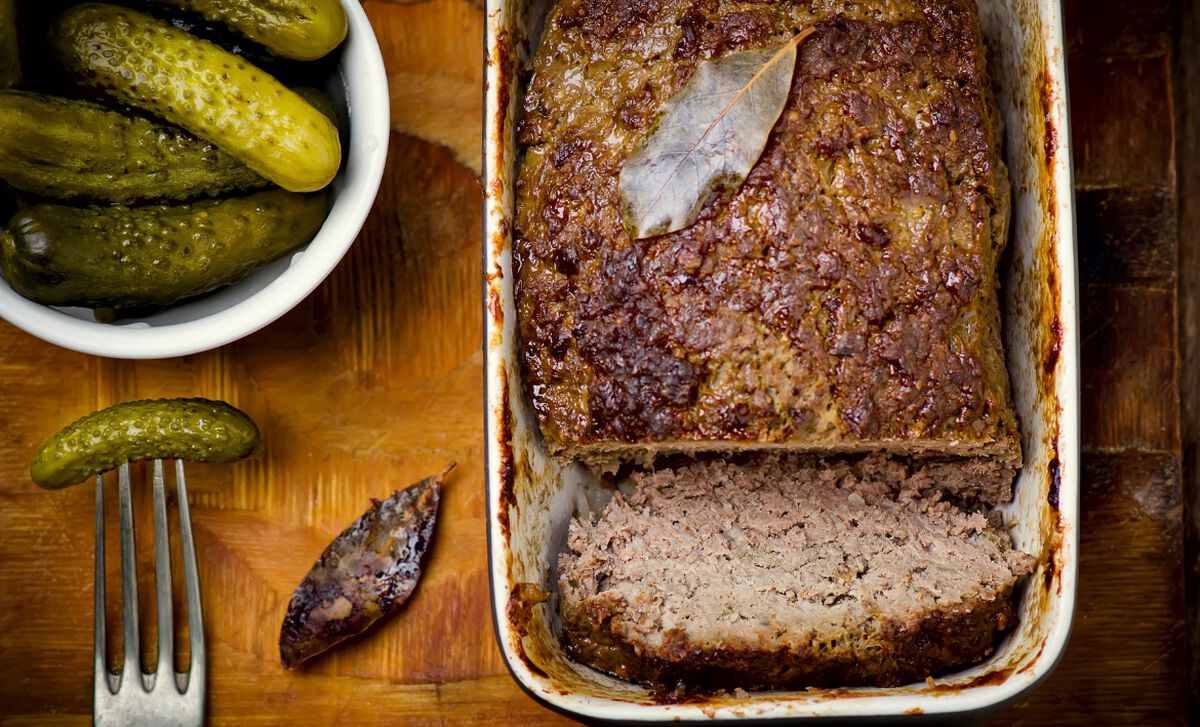
What Kind of Meat?
Pâté is often made of pig meat and parts, but wild game like snipe, partridge, venison or wild boar can be cooked into a pâté, as can farm-raised duck, rabbit or pheasant. Even vegetables can be made into pâté. Lean meats might require the addition of some pork fat to keep the pâté from drying out in the oven. Often, pâté is cooked in a crust or pie, in which case it is called pâté en croûte—meaning “in a crust.” In England, a workaday version of this pâté is found in every pub—but they call it pork pie. More often pâté is cooked in a special metal or porcelain loaf pan, and this mold is called a terrine. You might hear pâté referred to as terrine; if it’s cooked in a terrine, it can correctly be called a terrine.
Pâté or Terrine?
Sometimes served hot, but more usually cold, pâté in France refers to the coarsely ground version of the rustic meat dish. Savory herbs and onions, and sometimes Cognac, Armagnac, or wine round out most pâté recipes, though pistachios, dried cherries, and prunes might stud the meat, too. As you can see below, at D’Artagnan we use the term “terrine” to refer to our coarse meat pâtés. The casual use of the two terms interchangeably is now more acceptable in French culinary circles. And we also refer to silky-smooth foie gras cooked in a terrine as a “terrine.”
Serving and Eating Pâté
Our selection of pâtés is described below. Click through to learn how to incorporate them into a charcuterie board.
Pâté de Campagne (com-pon-yah) – meaning country pâté, this is a pork-based pâté made with liver and usually pork shoulder, onions, garlic, and parsley. Sometimes the loaf is cooked with bacon wrapped around it or caul fat. Best when served with grainy mustard, cornichons, and a fresh baguette or boule loaf, though pâté de campagne would be perfect in a banh mi sandwich.
Duck Terrine Mousquetaire (moose-kuh-tear) - This classic country-style terrine uses all the Gascony trinity of flavors: duck, prunes, and Armagnac. Note that this one is called a terrine, after the mold it is baked in. The sweetness of the prunes plays well with the rich duck meat in this savory recipe. The name is inspired by the musketeers (most famous among them a certain D’Artagnan) as mousquetaire is the French version of the word.
You can also make foie gras in a terrine, which is the ultimate, purist version of prepared foie gras since the whole liver is packed into a terrine mold and cooked at low temperature in a water bath. More on that here.
A Final Thought on Pâté
Though we have concentrated on the French contributions in the world of pâtés, let’s not forget that other cultures have also made pâtés, in terrines or otherwise. In Germany and Austria, liverwurst, that soft, spreadable sausage-shaped pâté is popular, and the recipe came to the United States with immigrants from that region. But the charms of pâté in various guises are well known to the Netherlands, Scandinavia, Russia, Ukraine, Poland, Sweden, and Great Britain. Whichever way you slice it, spread it, or serve it, pâté is a treat that everyone seems to enjoy.
